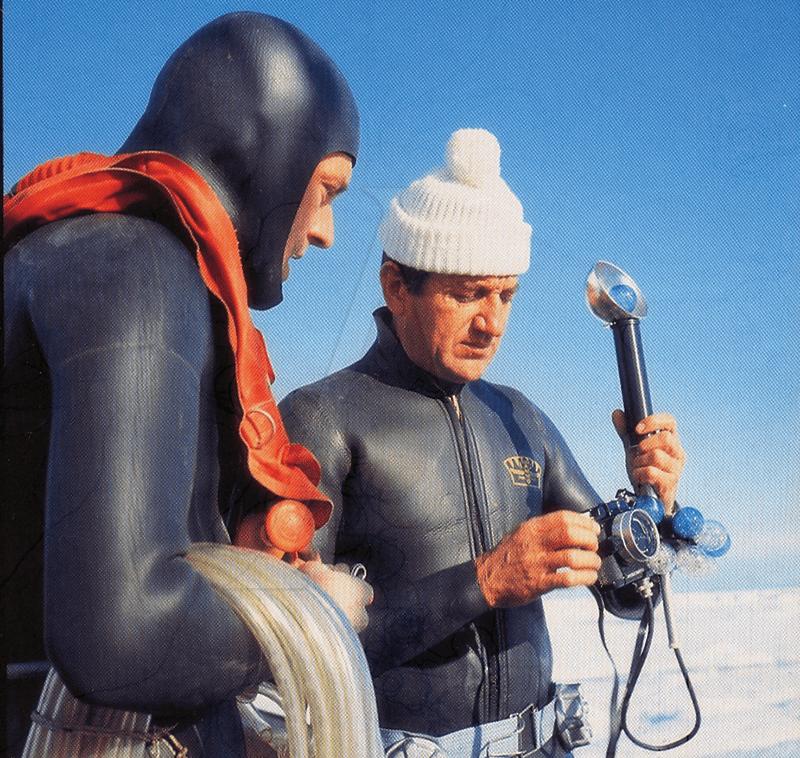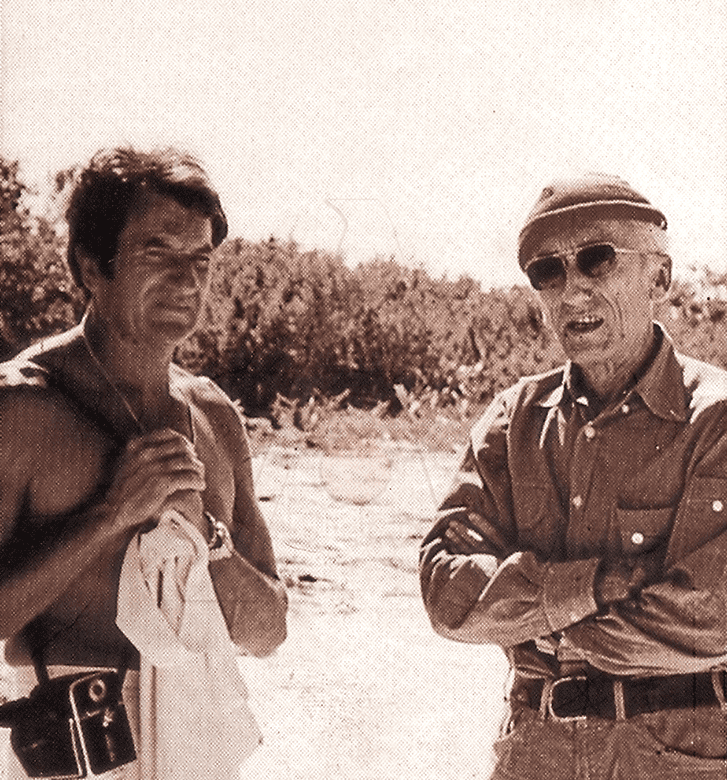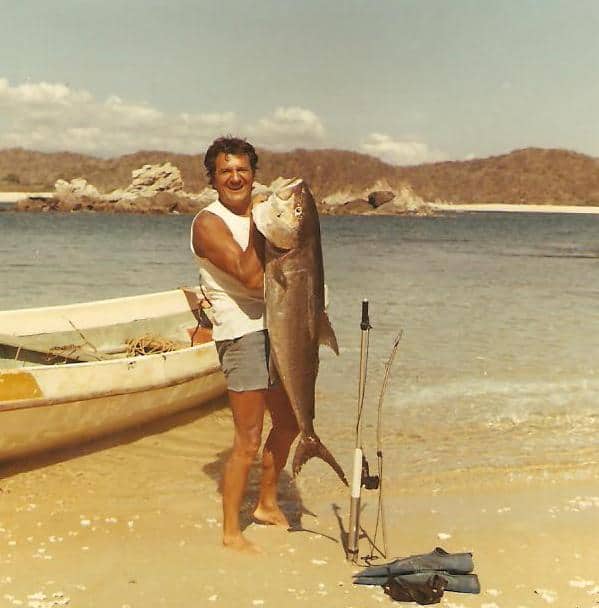Ramon Bravo: Early Life, Sleeping Sharks & Net Worth
The name Ramon Bravo is well known in multiple fields as Ramon was a man of numerous talents.
Bravo was primarily known as a Mexican diver, photographer, and underwater filmmaker.
In addition, he was also a swimmer, journalist, writer, ecologist, researcher, and many more.

He is known chiefly for preserving marine fauna and discoveries about the behavior and customs of sharks.
In addition, he was a remarkable athlete, having participated in the Olympic Games as a swimmer in 1948 and 1952.
Ramon Bravo: Quick Facts
| Full Name | Ramon Bravo Prieto |
| Date of Birth | October 21, 1925 |
| Nick Name | Bravo |
| Age | 72 years (at death 1998) |
| Gender | Male |
| Education | National Autonomous University of Mexico |
| Profession | Swimmer, Diver, Photographer, Filmmaker, Researcher, Writer, Journalist |
| Place of Birth | Piedras Negras, Coahuila, Mexico |
| Nationality | Mexican |
| Zodiac Sign | Libra |
| Marital Status | Married |
| Wife | Maria Vallejo de Bravo (third wife) |
| Father | Juan Bravo (dead) |
| Mother | María del Rosario Prieto (dead) |
| Siblings | Jose C. Bravo (dead), Maria del Carmen Bravo (dead), Manuel Bravo |
| Children | 3, Ramon, Ruth, Debora |
| Medals | Medal of Merit for Ecological Protection National Prize for Journalism |
| Date of Death | February 21, 1998 |
| Place of Death | Quintana Roo, Mexico |
| Cause of Death | Heart Attack |
| Burial Ceremony | Entrance of the underwater cave of the sleeping sharks |
| Height | 5 ft 10 in |
| Weight | N/A |
| Eye Color | Brown |
| Hair Color | Black |
| Literary Contributions | 18 |
| Movie Contributions | 20 |
| Olympic Games | London 1948, Helsinki 1952 as Swimmer |
| Social Media | N/A |
| Last Update | April 2024 |
Ramon Bravo: Early Life
Ramon was born in northern Mexico in Piedras Negras, Coahuila.
His parents were Juan bravo and Maria del Rosario Prieto. Meanwhile, his father was a railroader.
Ramon’s full name is Ramon Bravo Prieto which consists of both his maternal and paternal surnames.
Bravo went to the National Autonomous University of Mexico. In addition, he also played in the UNAM football team as a wide receiver.
Bravo came into the spotlight during the 1948 Summer Olympics. He represented Mexico as a swimmer twice in the Olympics.
Firstly, in 1948, in London, and later in Helsinki in 1952 during the 14th and 15th Olympic Games.
Later in his 30s, Bravo started dedicating his life to diving and underwater photography with his friend Apolonio Castillo.
As a result, his works under the water earned him fame in the United States and Europe.
You might be interested to read about another famous water sportsperson Eric Jackson: Family, Jackson Kayak & Net Worth.
Ramon Bravo: Career
He started dedication towards underwater activities in the 1960s.
Later in 1969, he earned the opportunity to collaborate as a cameraman with Bruno Vailati.
Along with the Italian director, Bravo filmed several underwater scenes for different series.
The duo worked together for seven years when they filmed scenes for “The Encyclopedia of the Sea,” “The Seven Seas,” and “Men of the Sea I.”
Bravo was the first to dive and film the killer whales in their natural state without a protective cage.

Moreover, he made this achievement in the frozen waters of Islas San Benito, Baja, California.
He was also the first to film polar bears swimming at the North Pole.
Unfortunately, Bravo was bit by one of the bears on his left heel while filming.
Story of Sleeping Sharks
Ramon Bravo is the name that is forever attached to sleeping sharks.
During his time in underwater photography and diving, Bravo developed a fascination for sharks.
As a result, he devoted a considerable portion of his life to filming and studying sharks.
Bravo’s friend Carlos Garcia, an Islander, was of great significance in discovering the sleeping shark.
Carlos was known as ‘Valvula’ or ‘Valve’ for his exceptional lung capacity.
Valvula discovered the sleeping sharks in a place known as ‘Los Cuevones’ or ‘The Big Caves’ while hunting for lobsters.
During that time, sharks were believed to require movements to live as they lacked an air bladder.
Because of such scientists’ claims, Bravo initially did not believe Vavula’s discovery and thought they were nurse sharks crawling on the sand.
Later, Bravo went to verify Valvula’s discovery after Valvula continued to insist on checking it.
After he checked it personally, Bravo saw a cave of Sharks such as a tiger, mako, whitetip, or bull sharks resting peacefully.
Immediately, Bravo sent the photographs and videos of the sleeping sharks to Smithsonian Institute.
Unfortunately, they were thought to be fakes, and Ramon was denied the discovery.
Dr. Eugenie Clark, a female marine biologist, and shark specialist, came to the Island and studied the phenomena.
Eugenie was a member of Scripps Intuition of Oceanography of La Joya, California. She was also known as ‘the Shark Lady.’
Later, she wrote an article on the sharks that featured on the cover of National Geographic magazine.
For the work, she received a gold medal from the Society of Women Geographers.
Working with Sharks
After the discovery of sleeping sharks, Bravo continued his study on sharks.
Bravo also served as guide and cameraman to Jacques-Yves Cousteau and his son Philippe and divers of the Calypso.
The team worked in the cave of sleeping sharks and reefs of Isla Mujeres to later create a documentary named ‘The Sleeping Sharks of Yucatan.’
The duo of Cousteau and Calypso also created documentaries about Cave of the Sleeping Sharks and March of the Spiney Lobsters.
Bravo also appears in the credits of the documentary film.

Bravo made several investigations on sharks while playing with danger.
He was attacked by the sharks while filming on more than one occasion.
The diver was also once attacked by a bull shark, causing injury to his left elbow.
As a result, he got urgent surgery, where he was given 54 stitches. In addition, the underwater filmmaker required intensive care for several weeks.
You might be interested to read about British actor and director Phillip Rhys: Director, Career & Net Worth.
Literature and Filmography
Ramon was more than just a diver and photographer. He has written numerous novels and worked on several movies.
His works were mostly related to diving, marine ecosystem, and sharks.
Among his works, ‘El Chinchorro’ was yet to be finished before his death.
As an incomplete work of Ramon Bravo, the unfinished work is about the protected zone of Mahahual.
Rene Cardona Jr. turned one of Bravo’s novels about sharks into a film named Tintorera in 1977.
In addition, the film is similar to the newer movie named “Jaws.’
Bravo also did an outstanding job as a cameraman, author, and co-author in several films.
He had been a part of about 20 films. Some of his famous works include 007 Licensed to Kill, Against all odds, and Three women at stake.
He directed underwater scenes for the movie Licence to Kill.
In addition, he also played the zombie who fights a tiger shark underwater in Zombi 2 movie.
Lucio Fulci directed the movie, and the shark was fed and tranquilized before filming the scenes.
Moreover, Bravo had the opportunity to work in American, Mexican, Italian, and Spanish films.
Along with working in movies, Bravo also had a successful television career.
He promoted environmental messages through “talk shows” despite the heavy censorship of Mexican television.
He also became a world icon and television personality because of his deep love and care for the oceans and their ecosystem.
Ramon Bravo: Personal Life
Bravo started the construction of his house in Isla Mujeres in 1979. He called the house “Villa Sirenia.”
He also carried out most of his research and writings in Villa Sirenia.
During his early days in Villa Sirenia, he became friends with Cousteau. The duo later worked on many underwater documentaries and investigations.

Ramon also has a medal of honor instituted to his name by the Government of the State of Quintana Roo.
The honor named “Ramon Bravo medal” is an Ecological Merit Medal awarded to distinguish people who excelled in research and protection of marine ecosystems.
In addition, this recognition is granted on February 21 of every three years and was started in 1999.
Ramon Bravo: Death
Ramon Bravo died at his own house in Isla Mujeres in 1998.
On February 21, Bravo got an electric shock caused by a power failure at his house.
As a result, the underwater filmmaker had a heart attack or a myocardial infarction, which took his life.
Ramon’s resting place is the same place where he had shared one of his most transcendent investigations.
Ramon’s wife, Maria Vallejo, and priest Eduardo Perez deposited his ash at the entrance of the cave of the Sleeping Sharks.
Additionally, the then president of Mexico, Ernesto Zedillo, his dear friend Jean-Michel Cousteau, and many authorities were present during the resting ceremony.
You might be interested to read about one of the all-time greatest boxers Muhammad Ali: Frazier, Career, Wife, Death & Net Worth.
Ramon Bravo: Net Worth
He was a very successful person. He excelled in different fields throughout his life.
Ramon Bravo collected a wealth of around $5 million before his death.
Social Media
Ramon was from an age when social media was not a thing. Moreover, he died in 1998 when social media were only coming into existence.
Hence, Ramon is not present on any of the social platforms.
Ramon Bravo: FAQs
What is present at the entrance of the cave of the Sleeping Sharks?
Ramon Bravo’s ashes were deposited at the entrance of the cave.
Additionally, a bronze plaque was also placed in his honor at the wish of his dearest friends and divers.
The plaque says, “Ramon Bravo, protector of the sea and the ocean, sleeps forever next to his sharks in this cave, Isla Mujeres 02-28-98.”
How do sharks breathe during sleep without an air bladder?
While sleeping, the sharks take the oxygen necessary for their respiratory process through their gills.
In conclusion, sharks sleep in a static position against the current for taking oxygen during sleep.
In addition, the mixture of fresh and salty water forms an electromagnetic field in the water that helps deworm the dormant sharks.
What other notable works have Ramon Bravo done?
In addition to discovering sleeping sharks, Bravo also dismissed an ancient myth that killer whales hunt for their survival and are not killers.
Moreover, while filming sharks, he said they had beautiful eyes and knew they could not hurt anyone.
Hence, he filmed documentaries without a safety cage.







